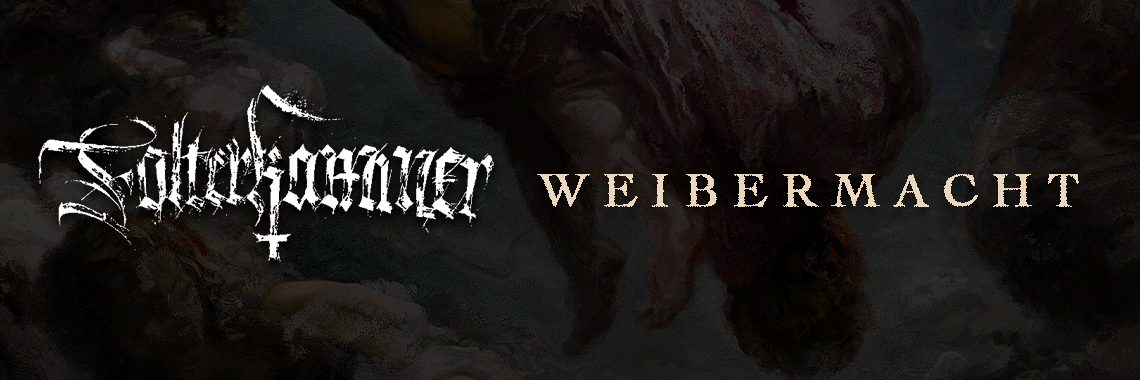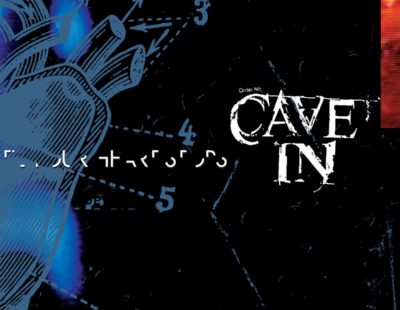
Enslaved’s Frost is more than a great black metal album. True, it’s musical prowess alone is enough to merit a place among the pantheon of releases that came out of Scandinavia in 1994 (De Mysteriis Dom Santhanas, In the Nightside Eclipse, Pentagram, and so on). But it’s often hailed, along with the band’s other 1994 release (Vikingligr Veldi), as a classic of Viking or pagan metal as well.
What does that mean exactly? The terms “Viking” or “pagan” as metal adjectives have become rather loaded. Typically, when metal listeners use these terms, they’re referring to Amon Amarth or perhaps the bands associated with the late-aughts pagan metal explosion (Ensiferum, Tyr, Turisas). But however fun these bands are (especially live), they tend to boil down more to a sort of Viking or pagan kitsch, rather than anything that evokes anything historical or mystical in the minds of listeners. The reliance on power metal, or power-infused melodeath, as the basis of the music might be the reason for this.
So what makes Enslaved, particularly Frost, different? After all, the song titles all relate to Norse mythology or the Viking age. The album cover has misty mountains on it. Hell, the guys in the band even have beards! But this is different, this is Viking black metal. Sure, this might be my personal preferences talking here, but style matters here (one could say the same about Unleashed, albeit in a death metal context). Trym Torson’s drumming seems impossibly fast, and yet is so punishing at the same time. Ivar Bjørnson’s guitar work is direct, straightforward and effective (he was only 16 when they recorded it! What’s your excuse?). Grutle Kjellson’s reverb-soaked vocals bear the demonic quality the genre is known for, but here sound more like heathen hordes shouting from the mountaintops. So while the imagery and subject matter might have a lot in common with the more Ren-Faire-esque bands, the combination of these themes with 2nd-wave black metal has much more to do with Bathory’s Blood, Fire, Death and bands like Windir, Helheim and Falkenbach.
Frost feels like a collection of stories, like the Poetic Edda set to music. And it’s because it’s played in a dark, menacing style that we are able to take it more seriously. And it’s why it’s worth chatting about which songs are your favorite.
9. Frost
I only place this song last since it’s meant as an ambient intro track. There’s nothing wrong with it. In fact, it opens the album perfectly. But it doesn’t make sense to try and set it against the other songs.
8. Yggdrasil
And I sort of feel the same way about this song. But that doesn’t mean it’s mixture of traditional and metal sounds isn’t artistically valuable. Long before Wardruna made a career out of recreating folk instrumentation and chants, Enslaved was way ahead of their time. Yggdrasil is of course the famous ash tree connecting the nine worlds in Norse mythology. It’s thematic importance bears similarity to the tree of life in Genesis and most certainly influenced J.R.R. Tolkien’s creation of the “trees of Valinor” in Middle-Earth (in the undying lands to the west, the ancestral homelands the of Elves).

7. Jotunblood
I’m assuming the song’s title refers to the Jӧtunn, another name for the giants in Norse myth, some of whom are destined to launch the final attack on the gods that brings about the end of the world (Ragnarok). The song itself is a perfectly fine and speedy black metal ripper, but not much else. Similar to, but not as good as, “Wotan” and “Loke.”
6. Gylfaginning
Gylfaginning is the name Snorri Sturluson, the Icelandic historian who chronicled the Norse myths, gave to the section of the prose Edda that described the creation and destruction of the world. One cool part of this song is the alternating drum and picking techniques applied in the beginning of the ride, creating the image of riding aboard a ship or perhaps on a horse charging into battle.
5. Wotan
Like “Jotunblood” and “Loke,” “Wotan” is a fast-paced blast of snow and ice in your face (similar to Immortal’s “Unsilent Storms in the North Abyss”). Though the song stays at pretty much the same pace until the battle march beat at the end, the riffs maintain the listener’s engagement as Grutle snarls (in Norwegian) “Die not lying sick, dastardly coward / Draw sword, fight with the war gods / Wotan!”
4. Fenris
Are those…steel drums? In a black metal song? Well, why the hell not?! I’m not sure what they have to do with a song about a giant wolf, but who cares?
3. Isodoners Dronning
The most “epic” song on Frost is also its most varied. Also known as “Queen of the Ice Desolates,” “Isodoners Dronning” has a serene, contemplative quality to it. This goes along nicely with the themes of wonder and longing apparent in the lyrics: “A lonely raven passes by / It seeks further on towards the warmth / On wings it is free / The woman in the castle bears the curse / There she will die, but will anybody / Remember?”
2. Loke
The album’s glorious and blistering opener (after the intro track), Loke is about the Norse god we refer to as “Loki,” the trickster. His reputation explains the mad cries of laughter that end the track, and perhaps even the pacing and attitude of the song itself. How Grutle was able to speak after this album (or how Trym managed to even move) is beyond me.
1. Svarte Vidder
Though “Heimdallr” and “Vetranott” certainly come close, this is undoubtedly my favorite Enslaved song. “Svarte Vidder” is loaded with well-placed variations in riff-style, tempo and mood that give it a memorable, storytelling quality. Translated into “Dark Mountain Plateaus,” the song is a tale of Viking and pagan glory that embodies the central theme I mentioned in my introduction.
“The ravens are flying, the one eyed watches,
Into the fog, shadows appear,
Memories from the first empire covered with gold,
Runes scratched in, scratches in by hatred,
The hordes of the one eyed are riding once again,
Hammer crushes cross,
Inverted by the unbound,
Dark clouds gather, the light retreats”
The song (and Frost as a whole) paints a warlike picture of the Viking past without being campy and ridiculous, and play a style of black metal that is brutal and menacing without having to use over-the-top imagery to get there.
To read the entire interview with the band about the making of Frost, purchase the issue from our store!
Note: For anyone interested, Gods and Myths of Northern Europe by H.R. Ellis Davidson is a great resource as well!






